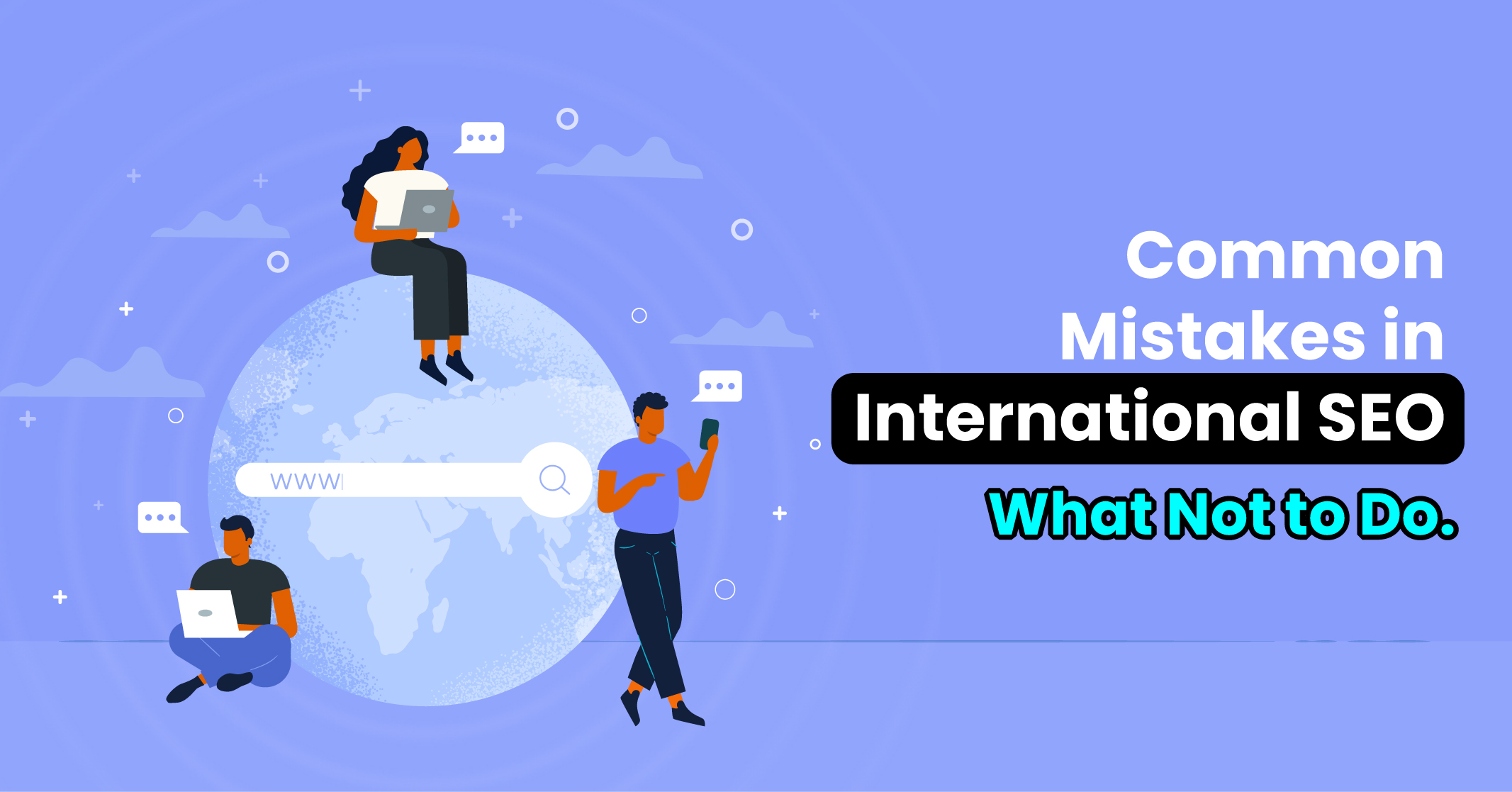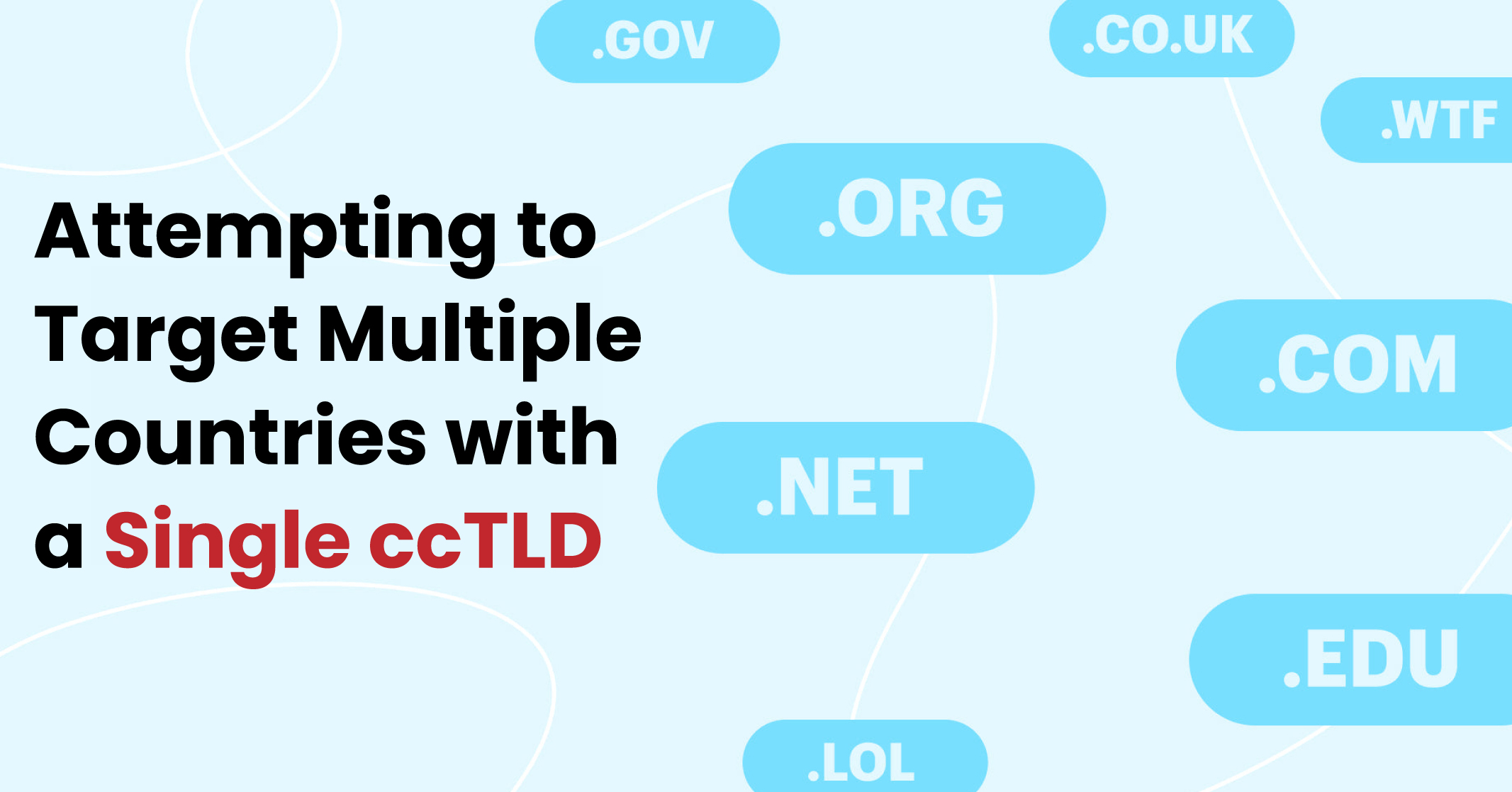I hope you enjoy reading this blog post.
If you want to get more traffic, Contact Us

Click Here - Free 30-Minute Strategy Session
Be quick! FREE spots are almost gone for this Month. Free Quote

Expanding your business to an international audience requires in-depth knowledge of your target markets and expertise in international SEO. However, it’s not uncommon to see international SEO campaigns with various issues, resulting in a sub-optimal user experience and failing to achieve desired results.
Marketers must have a firm grasp of technical SEO to succeed with international campaigns. Here are common issues and ways to fail at international SEO and how to avoid them.

Click Here – Free 30-Minute Strategy Session
Be quick! FREE spots are almost gone for this Month
Expanding your business to an international audience requires a solid understanding of international SEO, including the importance of establishing a specific and accessible URL structure for each language or country page.
Here are some key points to keep in mind when creating an international Web presence:
By following these international SEO tips, you can establish an effective international Web presence that accurately reflects your targeting and provides a positive user experience for visitors from around the world.
Automatically redirecting users to their relevant country or language version is not recommended as it can cause confusion and an intrusive experience. Users might have come to see content that is in another language or a specific country version, so it’s best to avoid redirects in this case.

It’s important to consider that Googlebot’s IPs are still mostly based in the US, which means that if we rely solely on redirects to show users their relevant country or language version, we might be inadvertently redirecting the Googlebot as well. This can limit the bot’s ability to crawl and index all of the international versions of our site.
Redirecting both users and bots can also result in a less than ideal user experience. Users may not appreciate being automatically redirected to a version of the site that they did not intend to visit, and it could lead to confusion and frustration.
Therefore, it’s better to allow both users and Googlebot to browse and crawl all the international versions of our site instead of relying solely on redirects based on IP address.
When expanding your website’s reach globally, it is crucial to avoid common international SEO mistakes. Here are some examples of these mistakes:
To avoid these mistakes and improve your global SEO efforts, it’s important to follow a global SEO checklist and implement best practices for each international version of your website.
When targeting different countries with the same language, avoid reusing content across your website versions. Instead, localise your content to target specific audience behaviour in each market. Conduct thorough keyword research and competitive analysis for each targeted country, with input from a native speaker, to optimise your web content, organisation, design and promotional actions.
Remember that even small differences in language and preferences can make a big impact on user experience and SEO. Follow these international SEO checklists and tips for success.

When it comes to expanding internationally, businesses that start by targeting a specific country using a ccTLD might face challenges.
Here are some key points to keep in mind:
By keeping these international SEO tips and checklists in mind, businesses can avoid common mistakes and optimise their online presence for global success.
Learn More: Google Search Console: A Step-by-Step Guide
When it comes to regional targeting, it’s worth noting that Google doesn’t currently support continent-level targeting through regional top-level domains like .eu or .asia, nor regional values like “eu” for Europe in hreflang.
This means that businesses looking to target Europe may find it more effective to use a gTLD with geolocated sub-directories and hreflang annotations for specific countries, rather than using an .eu domain. By doing so, they can ensure more precise targeting and improve their visibility in search results.
When dealing with country versions that speak the same language, it is common to have similar content across them even after localisation. However, if these country versions are correctly geolocated to their relevant markets, their content should not be seen as duplicates.
This is because they target different audiences and need to be indexable to rank effectively in each country. You don’t have to put canonical on these pages to one of the country versions of the site because each one is considered unique, targeted at a different location.
To geolocate each country’s version and effectively rank its pages in its relevant market, it is recommended to use either ccTLDs or geotargeted sub-directories or sub-domains. These should be specified in the Google Search Console and accompanied by hreflang annotations that specify the language and country targeting for each page and its alternate versions.
Sometimes, confusion may arise due to cross-country canonicalisation seen in some popular sites. For instance, Airbnb canonicalises its Mexican homepage to its Spanish homepage version on the .com domain.
However, we don’t know the context in which the decision for this configuration was made. On the other hand, in markets where Airbnb has an active business and organic search presence like the UK, France, or Spain, they self-canonicalise it.
Learn More: The Negative Impacts of Duplicate Content on SEO
A comprehensive hreflang implementation process is essential to ensure the correct usage of hreflang tags on a website. Many common mistakes can be avoided by following a structured validation process that includes checking for supported values, specifying the language and country values correctly, including the return tags, and ensuring indexable URLs.
Hreflang tags play a crucial role in optimising multilingual websites for search engines, allowing them to understand which language version of a page to serve to users based on their location and language preference. However, many website owners and developers make mistakes when implementing hreflang annotations, which can negatively impact their website’s search engine rankings and user experience.
To determine which languages and country versions require hreflang implementation, particularly those with observed international misalignment in search results, prioritisation may be necessary.
Evaluating the most suitable hreflang implementation approach, such as utilising tags in the HTML head, HTTP header, or XML sitemap, is dependent on the specific needs and limitations of the website and project.

Specify the appropriate hreflang tagging for the implementation, using the official guidelines provided by Google for the selected method. Additionally, ensure that the tags, attributes and values used are supported and avoid using any that are not compatible with the supported country and language formats.
Before launching, crawl the pages with implemented hreflang tags, using a test environment to detect any potential errors in the tagging. This can be done by crawling through the website or by using an XML sitemap crawl if that is the chosen implementation method.
After launching the pages with implemented hreflang tags on the live site, perform a recrawl to detect any remaining issues. Start monitoring these pages using the Google Search Console International Targeting report. Continuous monitoring is necessary to identify any problems that may arise when publishing new pages or modifying existing ones.
In addition, use the Google Search Console Search Analytics or the Performance report to detect any potential new languages and countries misalignment issues in Google’s search results.
Create documentation outlining the scope and rules for implementing hreflang, which can serve as a reference for best practices when publishing pages for the relevant languages and countries, or when making changes to their URLs.
This documentation is crucial for ensuring that hreflang annotations can be updated and validated correctly, minimising the occurrence of errors. By following this hreflang implementation process, any errors that do occur can be quickly identified and resolved.
With these steps, you can avoid common international SEO issues and confidently address any that arise.

LEAVE A REPLY